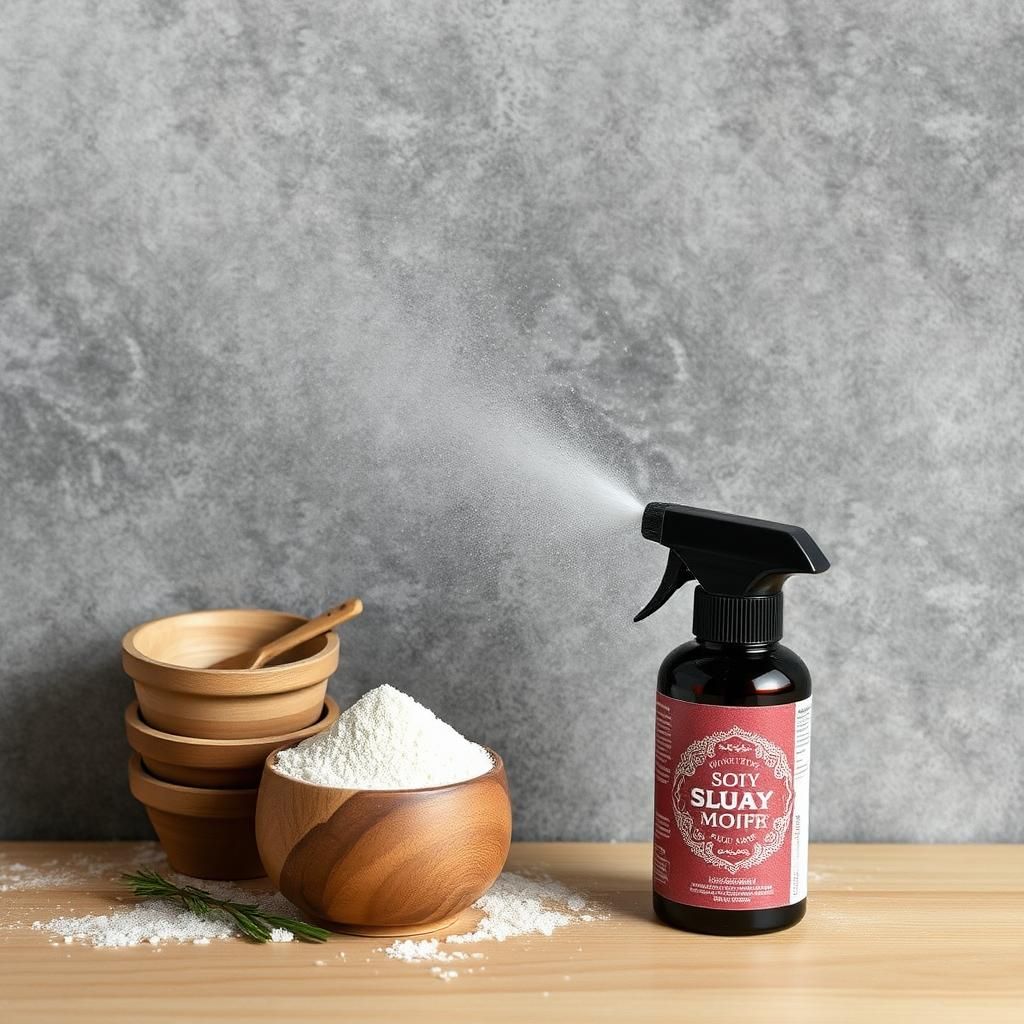Effective Homemade Spray for Sooty Mould: Simple Recipes and Tips

Sooty mould can be a frustrating problem for gardeners and plant enthusiasts, as it often indicates underlying pest issues while also detracting from the beauty of plants. This article will explore effective homemade spray solutions to combat sooty mould, offering simple recipes that utilize natural ingredients readily available in most households. Additionally, we will provide practical tips on application methods and preventive measures to keep your plants healthy and thriving. Whether you're dealing with indoor houseplants or a flourishing garden, these solutions will help restore your plants and maintain their vibrant appeal.
Homemade Spray for Sooty Mould
Creating a homemade spray for sooty mould is an effective way to combat this unsightly fungal growth that often appears on plants, particularly when they are infested with aphids or other sap-sucking insects. The primary ingredients for a DIY solution typically include water, baking soda, and a few drops of liquid soap, which together help to eliminate the mould while being safe for your plants. By mixing these components, you generate a spray that not only cleans the affected areas but also creates an inhospitable environment for the mould to thrive. Regular application every couple of weeks can help keep your plants healthy and free from this troublesome fungus.
Ingredients for Homemade Spray
To create a simple and effective homemade spray for sooty mould, you will need just a few key ingredients. The basic recipe calls for one tablespoon of baking soda, one tablespoon of liquid dish soap, and a gallon of water. The baking soda works to disrupt the mould's growing conditions, while the soap helps the solution adhere to the affected surfaces. Make sure to mix these ingredients thoroughly to ensure that the baking soda is fully dissolved before transferring the mixture into a spray bottle for ease of application.
Application Process
Applying the homemade spray is straightforward and can be done using any standard spray bottle. Begin by selecting a cool day to avoid leaf burn, and thoroughly shake the bottle to ensure the solution is mixed well. Spray the affected areas of your plants, focusing on the leaves and stems where the sooty mould is visible. It’s advisable to apply the spray in the morning or late afternoon when the sun is less intense. For the best results, reapply every 7 to 14 days, especially after rain or watering.
Effectiveness of the Spray
The effectiveness of a homemade spray for sooty mould is generally quite high when used consistently. The baking soda works as a mild fungicide, inhibiting the growth of fungal spores, while the soap helps to facilitate penetration, allowing the spray to reach deeper into the affected areas. Many gardeners report significant reductions in mould presence within a couple of weeks of regular applications. However, it's crucial to manage the underlying pest issues, such as aphids, as they contribute to the formation of sooty mould from their honeydew excretions.
See also:
Safety Precautions
While homemade sprays are generally safe for plants when correctly used, it’s important to take certain safety precautions to avoid any adverse effects. Before applying the spray to your entire plant, test it on a small, inconspicuous area to check for any potential negative reactions. Additionally, avoid applying the solution during extremely high temperatures or direct sunlight, as this can cause leaf burn or damage. Always wash your hands after handling the ingredients and ensure the mixture is stored out of reach of children and pets.
Storage Tips
If you make a larger batch of the homemade spray than needed, proper storage is essential to maintain its effectiveness. Store the solution in a cool, dark place, preferably in a sealed container to prevent contamination. While it is generally best to use fresh sprays, the solution can last for up to several weeks if kept properly. Before using any stored spray, give it a good shake to re-mix any separated ingredients and always check for any signs of spoilage.
| Ingredient | Function |
|---|---|
| Baking Soda | Mild fungicide, disrupts mould growth |
| Liquid Soap | Helps solution adhere to surfaces |
| Water | Dilutes other ingredients for application |
Understanding the Causes of Sooty Mould in Your Garden
Sooty mould is often a result of infestations by sap-sucking insects such as aphids, whiteflies, and scale insects. These insects excrete a sticky substance known as honeydew, which provides a perfect environment for sooty mould to thrive. In gardens with high humidity and poor air circulation, the likelihood of sooty mould increases, as these conditions favor the growth of this fungus. By understanding the sources of infestation and taking appropriate preventive measures, you can effectively reduce the occurrence of sooty mould in your garden.
Identifying Sooty Mould Infestation
To effectively treat sooty mould, it is crucial to first identify the signs of infestation. Look for a distinctive black, powdery coating on the leaves of your plants, which can inhibit photosynthesis and weaken the plant. Additionally, inspect the undersides of leaves for tiny insects that may be causing the problems, as these pests are often the primary culprits behind the honeydew production that feeds the growth of sooty mould.
Common Ingredients for Homemade Sprays
When creating a homemade spray to combat sooty mould, certain ingredients can be particularly effective. Common items include dish soap, which helps to breakdown the honeydew, and baking soda, known for its antifungal properties. Vinegar can also be used to create a more acidic environment that inhibits mould growth. Mixing these ingredients with water makes a simple yet efficient solution that can be sprayed directly onto affected plants.
See also:
Step-by-Step Recipe for a Homemade Spray
To create a simple and effective homemade spray, combine 2 tablespoons of dish soap, 1 tablespoon of baking soda, and 1 quart of water in a spray bottle. Shake well to ensure that the ingredients are fully incorporated. Before applying, it is advisable to do a patch test on a small area of the plant to ensure there are no adverse reactions. Once confirmed, spray generously on the affected areas, especially where the sooty mould is most visible.
Application Tips for Maximum Effectiveness
For the best results, apply the homemade spray during the early morning or late afternoon when temperatures are cooler and plants are less stressed. Ensure you are spraying on both the upper and lower sides of the leaves where sooty mould often hides. Reapply every 7 to 14 days, or as needed after rain, to maintain the effectiveness of your treatment. Regular monitoring of your plants can also help you catch any new infestations early.
Preventive Measures to Avoid Sooty Mould
Preventing sooty mould begins with good garden hygiene. Regularly inspect your plants for signs of sap-sucking insects and take immediate action if necessary. Additionally, improving air circulation around your plants by spacing them appropriately and trimming any dense foliage can significantly reduce humidity levels, making it less likely for mould to develop. Consider using natural predators like ladybugs to keep insect populations in check and institute regular maintenance routines to ensure plant health.
Questions from Our Readers
What is a homemade spray for sooty mould?
A homemade spray for sooty mould is a natural solution designed to eliminate the black, soot-like fungus that can develop on plant leaves due to pests. This spray often includes ingredients like baking soda, dish soap, or vinegar, which help disrupt the growth of the mould while being safe for the plants.
How do I make a homemade spray for sooty mould?
To make a homemade spray for sooty mould, mix 1 tablespoon of baking soda, 1 tablespoon of dish soap, and a gallon of water in a spray bottle. This mixture creates an effective solution that can be sprayed directly on affected leaves to help remove the mould and prevent its return.
See also:
How often should I apply the homemade spray?
It is recommended to apply the homemade spray for sooty mould every 7 to 10 days until the mould is cleared. Additionally, making the application after rainfall or heavy watering ensures that the solution remains effective on the plant's foliage.
Are there any precautions I should take when using the spray?
Yes, when using a homemade spray for sooty mould, it's essential to test it on a small, inconspicuous area of the plant first to check for any adverse reactions. Always apply the spray during the cooler parts of the day, such as early morning or late afternoon, to avoid leaf burn caused by sun exposure.

If you want to read more articles like Effective Homemade Spray for Sooty Mould: Simple Recipes and Tips, we recommend you check out our Gardeners category.
Leave a Reply
Related Articles